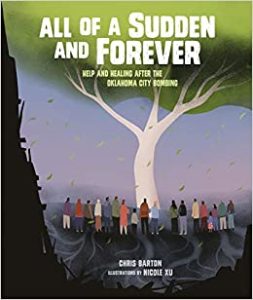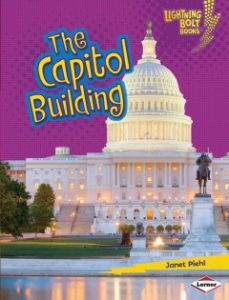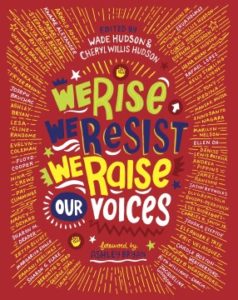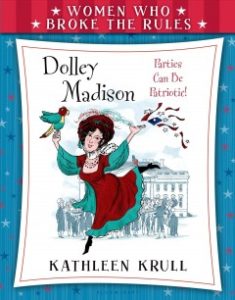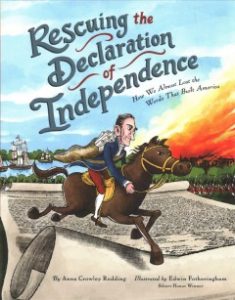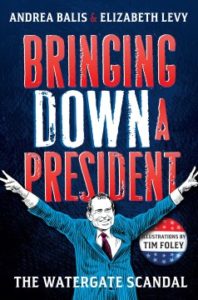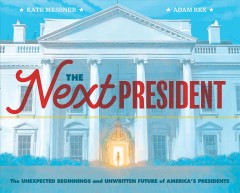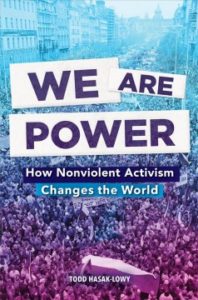In the past, we’ve offered resources for parents after violent events in the news.* I have read a few articles with resources adults can share: help for worried kids, factual information, introductions to government and some recommended books. Many of these resources are for students who are in middle school or older, so I will try to narrow them down to just materials for children age 10 and under (and their teachers and families):
A feature on NPR listed tools from the New York City Department of Education, which includes When Something Scary Happens from PBS kids. This includes some videos featuring the familiar characters Daniel Tiger and Arthur, activities and advice for families.
One School Library Journal article listed:
-
- Talking to Kids About the Attack on the Capitol from the National Education Association with advice for adults, including guidelines on what is appropriate for children of different ages (these resources are also available in Spanish)
- Support for You and Your Students: Chaos at the Capitol from Scholastic, with news articles written for children at different reading levels and advice for talking about events with young children
- When Bad Things Are Happening, a guide from Teaching Tolerance for how to do a classroom discussion on a volatile topic.
A second article in School Library Journal included book suggestions. These titles are available in the children’s collection:
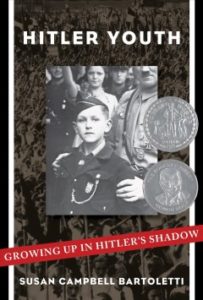
Hitler Youth: Growing Up In Hitler’s Shadow by Susan Campbell Bartoletti
The story of a generation of German young people who devoted all their energy to the Hitler Youth and the propaganda that brought Hitler his power, and the youths that resisted the Nazi movement.
SLJ suggests reading this title, in whole or in part, as a way to understand why people join hate groups (with an eye towards preventing this kind of activity). This title would be most appropriate for someone in grade 5 or older.
Find It Now
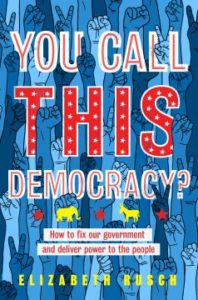
You Call This Democracy? How To Fix Our Government And Return Power To the People by Elizabeth Rusch
America is the greatest democracy in the world…isn’t it? Author Elizabeth Rusch examines some of the more problematic aspects of our government but, more importantly, offers ways for young people to fix them.
SLJ suggests this one for helping students better understand government. Reviewers recommended it for ages 12 and up.
Find It Now
All Of a Sudden And Forever: Hope And Healing After the Oklahoma City Bombing by Chris Barton
On April 19, 1995, something terrible happened in Oklahoma City: a bomb exploded, and people were hurt and killed. But that was not the end of the story. Those who survived—and those who were forever changed—shared their stories and began to heal.
SLJ recommended this as a book to aid in discussions of preventing domestic terrorism. It is suggested for ages 7 and up.
Find It Now
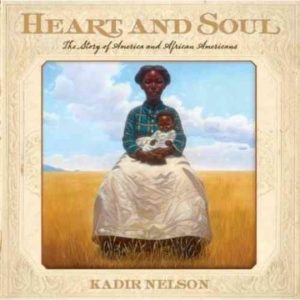
Heart And Soul: The Story of America And African Americans by Kadir Nelson
A simple introduction to African-American history, from Revolutionary-era slavery up to the election of President Obama.
SLJ suggests the first chapter of this book, set in the U.S. Capitol and exploring its murals, to discuss the symbolism of the building.
Find It Now
The article also recommends an online resource, The News Literacy Project, where I saw some resources for students as young as grades 4–6. This can help students learn how to tell the difference between fact and opinion and identify reliable sources of information.
Two more online resources that might be helpful are the PBS Kids page for parents, which currently features an article on Helping Kids Navigate Scary News Stories. Sesame Street in Communities lets teachers and families explore different topics, including community violence, and has lots of activities for children related to feelings; the resources on the Sesame Street website are in English and Spanish.
Online resources available through our website include TrueFlix and Freedom Flix, which both include eBooks and supporting materials to teach basic information about U.S. government. World Book Student, in addition to encyclopedia articles, has information on current events. Enciclopedia Estudiantil Hallazgos has encyclopedia articles in Spanish. We also have a blog post on New Spanish Children’s Books on Voting and Government.
Here are some more books in the children’s collection:
The Capitol Building by Janet Piehl
Explores the purpose, history and construction of the U.S. Capitol Building.
Find It Now
We Rise, We Resist, We Raise Our Voices edited by Wade Hudson and Cheryl Wells Hudson
Fifty of the foremost diverse children’s authors and illustrators—including Jason Reynolds, Jacqueline Woodson, and Kwame Alexander—share answers to the question, “In this divisive world, what shall we tell our children?” Suggested for ages 8–12.
Find It Now
Dolley Madison by Kathleen Krull
From hosting parties for Washington D.C.’s social and political elite to saving a portrait of George Washington before the British burned down the White House in the War of 1812, First Lady Dolley Madison did it all! This short chapter book is suggested for grades 1–4.
Find It Now
Rescuing the Declaration of Independence: How We Almost Lost the Words That Built America by Anna Crowley Redding; Illustrated by Edwin Fotheringham
Today, the Declaration of Independence is one of the United States’ most heavily guarded treasures, but during the War of 1812, it would have been destroyed if not for one man whose story has nearly been forgotten by time. This nonfiction picture book is suggested for grades 1–5.
Find It Now
Bringing Down a President: The Watergate Scandal by Andrea Balis & Elizabeth Levy; Illustrations by Tim Foley
Describes the events, personalities and issues involved in the Watergate Affair, featuring quotes from primary source materials. Suggested for grades 7 and up.
Find It Now
The Next President: The Unexpected Beginnings And Unwritten Future Of America’s Presidents by Kate Messner
This intriguing look at presidents throughout history points out that as one president is in power, future presidents are doing all sorts of things. Suggested for ages 8–12.
Find It Now
We Are Power: How Nonviolent Activism Changes the World by Todd Hasak-Lowy
An inspiring introduction to nonviolent activism and how it works traces the examples of history-shaping international movements as well as such practitioners as Mahatma Gandhi, Martin Luther King, Jr. and Cesar Chavez to reveal how nonviolent demonstrations have repeatedly succeeded. Suggested for grades 5 and up.
Find It Now
*Here are some resources we’ve previously provided on our current and former blog. Not every link may be up to date, but there is still lots of good information.
- Race, Police And Justice
- Updated Resources for Stressful Situations
- What To Do When Kids Are Scared & Worried

